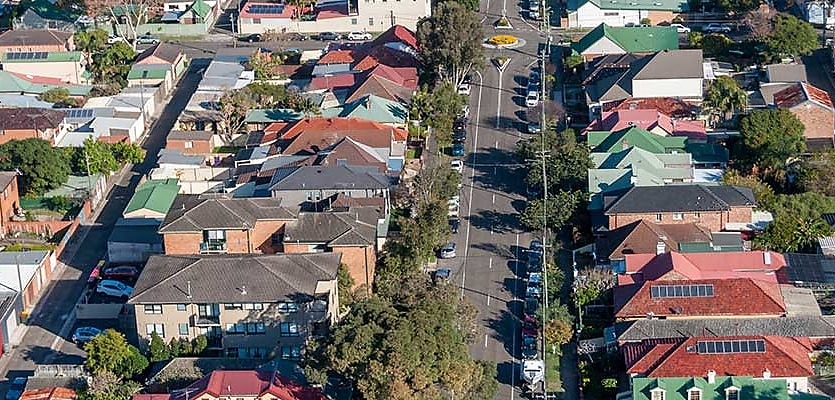New data has shown that buyers are retreating from the market, as rising rates and surging costs associated with purchasing a home deter both owner-occupiers and investors from saying “I do” to a mortgage commitment.
The latest data from the Australian Bureau of Statistics (ABS) showed that the value of new home loan commitments for housing fell by 8.5 per cent in July to $28.4 billion.
The figures represent the biggest monthly drop on record in dollar terms and follow a 4.4 per cent decline in June.
Further breaking down the figures, owner-occupier loan commitments fell 7 per cent over the month, representing a $1.44 billion decline from June in seasonally adjusted terms.
Notably, aspiring home owners are shying further away from the market, as the number of new loan commitments to owner-occupier first home buyers fell to its lowest level since May 2019 by recording a 10.7 per cent drop in July to 8,388.
In dollar terms, the value of new first home buyer loans dropped by $427 million in July, as interest rate rises slashed first home buyer budgets.
Compared to the same period last year, the number of first-home loans is down by almost 36 per cent, bringing it below the pre-pandemic level of February 2020, the ABS said.
But it’s not just those looking for their brand-new abode that are taking a rain check from buying. Data showed that investor lending also dropped by $1.18 billion, down 11.2 per cent, this month.
ABS head of finance and wealth Katherine Keenan said that while lending has fallen from historically high levels recently, the value of loan commitments continued to be “significantly higher” than pre-pandemic levels.
“Still, owner occupier loans in July 2022 were 40 per cent higher than February 2020, while investor loans were 78 per cent higher,” she noted.
Most experts are in agreement that the rising rates were the main culprit behind buyers turning their backs on the real estate market.
In May, the Reserve Bank of Australia (RBA) kicked off its monetary policy tightening, which brought the country’s official cash rate from a record low of 0.1 per cent to 1.85 per cent in August, following the most rapid spate of rate rises that the country has seen since 1994.
But while property prices were in retreat — falling in some cities at the quickest pace in about 40 years — due to rising interest rates, analysts said housing affordability was likely weakening due to the cost of servicing loans rising faster against property values.
Research director of RateCity Sally Tindall said that the steep decline in home lending in July reflects the trend in the property market, where would-be buyers are staying away from open homes in droves.
“While rising interest rates are causing havoc on people’s property buying budgets, others are stepping out of the market in the hope of finding a cheaper deal down the track,” she added.
Ms Tindall pointed out that while declining property prices are “welcome news” for first home buyers, there are still many who still find themselves locked out of the market in a rising-rate environment.
“First home buyers might not need as big a deposit, but they’ll still have to pass lenders’ serviceability tests — no mean feat when the bank is under instructions to stress test your finances at current rates, plus an additional 3 per cent,” she said.
With market grounds continuing to shift under buyers’ feet, she said that sentiment has significantly softened and will continue to do so in the coming months in line with the trend in dwelling values.
“Suddenly, a ‘fear of missing out’ has pivoted to a ‘fear of getting in’, particularly with further property price drops expected in the months ahead,” she noted.
“Buying a home is one of the biggest purchases you can make. The idea of overpaying and watching property prices drop further is enough to spook even some of the most determined buyers,” Ms Tindall said.
Tom Devitt, economist for the Housing Industry Association (HIA), further stated that the recorded 4 per cent fall in loans for construction and new house purchases in July “highlight the impact of the recent increases in the RBA’s cash rate”.
“The rise in the cost of borrowing is compounding the impact of the rapid increase in the cost of building a new home that occurred due to the constraints on global supply chains,” Mr Devitt commented.
Further highlighting the ripple effect of the rising rates on the market, Mr Devitt cited data that showed that transaction volumes were also on a downward trajectory — a trend that the expert predicts will continue until the end of the year.
“New home sales across Australia declined by 13.1 per cent in July, following even earlier reports from the industry of a slowing in the number of groups visiting display sites. This will see weaker sales volumes in the second half of 2022,” he said.
Echoing other experts’ statements, Real Estate Institute of Australia (REIA) president Hayden Groves said that despite declining property prices across the country, interest rate rises and high costs associated with buying are barring both investors and home buyers from the market.
With property ownership and investment becoming “increasingly challenging for many Australians”, he called on state and federal governments to address the underlying issues of housing affordability and rising inflation before the situation reaches a new crisis point.









You are not authorised to post comments.
Comments will undergo moderation before they get published.